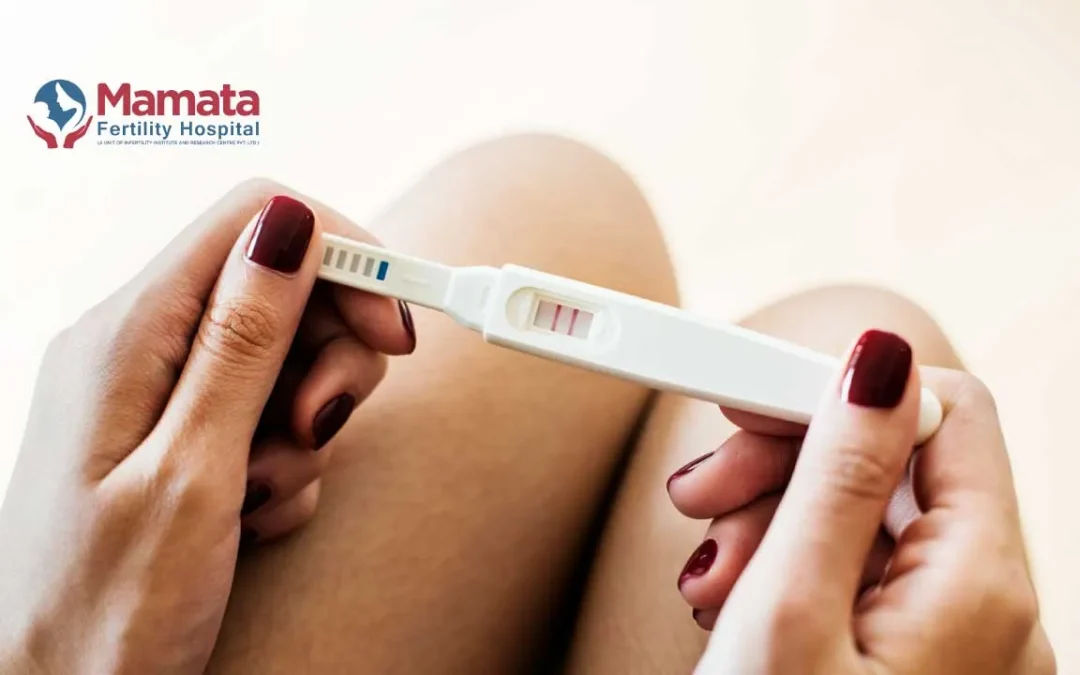Hydrocele
At Mamata Fertility Hospital in Secunderabad, we believe in helping patients understand their health conditions in simple and clear terms. One such condition affecting men, especially young boys and older individuals, is hydrocele. While it may sound concerning, hydrocele is typically manageable with proper medical care.
This article provides comprehensive insights into hydroceles, shedding light on the causes, symptoms, diagnostic methods, and available treatments for this condition.
For Appointments, Please Call:
More On Azoospermia
What is Hydrocele?
A hydrocele, pronounced as “hi-dro-seel,” is a condition where fluid collects in the scrotum, the sac that holds the testicles (testes). The scrotum normally has a small amount of fluid to cushion and support the testicles, but when there’s an imbalance in how fluid flows in and out, it can lead to a hydrocele.
Hydroceles are quite common in newborns and can also affect adult men, especially those over 40.
Types of Hydrocele
Hydroceles are broadly categorized into two types based on the underlying cause:
- Congenital Hydrocele (Present Since Birth):
This type occurs in newborn boys due to incomplete closure of the tube that connects the abdomen to the scrotum during fetal development. Fluid flows into the scrotum and may not drain properly.
- Acquired Hydrocele (Develops Later):
This type occurs in adult men and can be caused by infections, injuries, or other health conditions.
Though hydrocele is rarely serious, in some cases, it can indicate an underlying issue that requires attention.

Causes of Hydrocele
1. Congenital Causes
During fetal development, the testicles descend from the abdomen into the scrotum through a tube called the inguinal canal. Normally, this canal closes after birth. If it doesn’t seal properly, fluid from the abdomen can flow into the scrotum, leading to a hydrocele.
2. Acquired Causes
For adults, hydrocele usually develops due to factors such as:
- Trauma or Injury: Injuries to the scrotum can lead to fluid accumulation.
- Inflammation or Infection: Conditions like epididymitis (inflammation of the coiled tube at the back of the testicle) or orchitis (inflammation of the testicle) can cause hydrocele.
- Blockage of Lymph Vessels: A blockage in lymphatic drainage can prevent fluid from returning to the body, leading to hydrocele formation.
- Surgery: Postoperative complications, for example after hernia surgery, may result in hydrocele.
Understanding the cause is important for determining the best treatment for the patient.
Signs and Symptoms
The most common sign of a hydrocele is swelling in the scrotum. This swelling is usually painless and may not cause discomfort. However, the size of the swelling may vary throughout the day.
Key Symptoms to Look For:
- Scrotal Swelling: A noticeable enlargement of the scrotum that feels soft or fluid-filled.
- Heavy Sensation: A feeling of heaviness or discomfort in the scrotal area.
- Minimal Pain or Discomfort: While hydroceles are typically painless, larger ones may cause mild discomfort due to their size.
In severe cases or when a hydrocele is linked to infection (infected hydrocele), symptoms may include:
- Pain or Tenderness in the Scrotum
- Redness or Warmth
- Fever
If you experience any of these signs, consult a doctor for proper diagnosis and treatment.
Does Hydrocele Cause Infertility in Males?
A common concern for men diagnosed with hydrocele is whether it can lead to infertility. The simple answer is that in most cases, hydrocele does not directly cause infertility. Hydroceles are primarily a fluid buildup in the scrotum, which typically does not interfere with sperm production or reproductive function. However, there are certain situations where hydrocele might indirectly affect fertility.
How Hydrocele Might Impact Fertility?
- Underlying Conditions:
Sometimes, hydrocele develops due to infections, inflammation, or trauma to the reproductive organs. For example, conditions like epididymitis or orchitis, which can lead to hydrocele, may impact sperm health or production if left untreated.
- Testicular Compression:
A very large hydrocele might, in rare cases, place pressure on the testicles. Prolonged compression could potentially affect sperm production or function, especially if left unaddressed for a long time.
- Scrotal Temperature:
One theory is that enlarged hydroceles might raise the scrotal temperature slightly, which could affect sperm quality. However, this scenario is uncommon and not considered a primary cause of infertility.
Reassuring Facts
- Congenital Hydroceles: These are usually harmless and resolve on their own within the first couple of years of life without affecting reproductive health.
- Acquired Hydroceles: Most adults with hydrocele do not experience fertility problems, especially when the condition is mild and treated appropriately.
It’s important to remember that many men with hydrocele do not face any fertility challenges. However, if hydrocele is accompanied by pain, significant swelling, or other symptoms of concern, it is best to consult a specialist.
Addressing Fertility Issues
If there is any concern about infertility, doctors may recommend tests like semen analysis to assess sperm count, motility, and quality. Treating the underlying hydrocele—whether through aspiration or surgery—can help alleviate any potential impact on fertility.
At Mamata Fertility Hospital, we prioritize a thorough evaluation of all aspects of your reproductive health. If you’re worried about hydrocele and its effects on fertility, our team of experienced specialists is here to provide clarity and solutions.
Diagnosing Hydrocele
Diagnosing a hydrocele is a straightforward process involving physical exams and diagnostic tools.
Steps in Diagnosis
- Medical History & Physical Examination
The doctor will ask questions about your symptoms, medical history, and any past injuries to the scrotum. They will then examine the scrotum for swelling and tenderness.
- Transillumination Test
A simple and non-invasive test called transillumination is commonly used. The doctor places a light at the back of the scrotum. If the scrotum glows (light passes through), it indicates the swelling is filled with fluid, confirming a hydrocele.
- Ultrasound
If the cause of the swelling is unclear, the doctor may recommend an ultrasound. This imaging technique helps detect whether the swelling involves solid masses, which could indicate other conditions like a tumor or hernia.
By accurately diagnosing hydrocele, doctors can differentiate it from other, more serious conditions, ensuring the right course of treatment.
Treatment Options for Hydrocele
Hydroceles often resolve on their own, especially in infants, but in some cases, treatment may be necessary. Here are the available options:
1. Observation and Monitoring
- For babies with congenital hydrocele, the condition often resolves naturally within the first 1–2 years.
- Doctors may recommend monitoring the condition to check for improvement or complications.
2. Medical Interventions for Adults
When hydrocele persists or causes discomfort, medical treatment may be required.
a. Aspiration
- Fluid is drained from the scrotum using a fine needle, providing temporary relief.
- This is often recommended for cases where surgery is not feasible.
b. Hydrocelectomy (Surgical Removal)
- Hydrocelectomy is the most effective treatment for hydrocele.
- During the procedure, a small incision is made in the scrotum or groin to drain the fluid and remove the tissue lining causing buildup.
- It is a safe and common procedure with minimal risks when performed by a skilled surgeon.
3. Addressing Underlying Causes
If the hydrocele is caused by infections or inflammations, the underlying condition is treated first.
- Antibiotics: For bacterial infections like epididymitis.
- Anti-inflammatory Medications: To reduce inflammation and pain.
4. Post-Treatment Care
After aspiration or surgery, patients may need to follow these tips for recovery:
- Refrain from strenuous activities for a few weeks.
- Wear supportive underwear to reduce swelling and provide comfort.
- Use cold packs to manage post-operative swelling.
- Attend follow-up appointments to monitor recovery progress.
Successful treatment often brings effective relief, and most patients can return to normal activities without further complications.
Does Hydrocele Removal Affect Fertility?
One of the common questions men have when considering surgery for hydrocele is whether the procedure might impact their fertility. The reassuring news is that hydrocele removal, also known as hydrocelectomy, is generally considered safe and does not negatively affect male fertility. In fact, in some cases, it can even improve reproductive health by addressing conditions that might have been causing discomfort or complications.
The Hydrocelectomy Procedure
Hydrocelectomy is a surgical procedure performed to drain the fluid from the scrotum and remove the sac (tunica vaginalis) that causes fluid buildup. The surgery is typically straightforward:
- Minimal Risk to Testicles: During the procedure, the surgeon carefully avoids interfering with the testicles or the structures responsible for sperm production.
- Outpatient Process: It’s often done on an outpatient basis, meaning you can go home the same day.
Recovery and Fertility
After the surgery, your reproductive health should remain unaffected. Here’s what to expect during recovery and its impacts on fertility:
- Healing Period: Most patients recover fully within a few weeks. Temporary swelling or discomfort may occur, but this is part of the healing process and doesn’t affect fertility.
- Improved Comfort: Removing a large hydrocele can relieve testicular compression or discomfort, creating a more favorable environment for sperm production.
- No Damage to Sperm Function: The surgery does not interfere with the testicles or sperm transport routes, so sperm production and function remain intact.
Key Considerations
- Underlying Conditions: If the hydrocele was linked to an infection or other issues affecting the testicles, addressing these conditions through surgery or additional treatments can further support fertility.
- Post-Surgical Care: Following your doctor’s recovery recommendations—like refraining from strenuous activities for a few weeks—ensures optimal healing without complications.
Consulting Your Doctor
If you’re planning for a family and have concerns about hydrocele surgery, talk openly with your doctor. A semen analysis or fertility assessment may be suggested before or after the procedure to evaluate your reproductive health and provide peace of mind.
At Mamata Fertility Hospital, we specialize in procedures like hydrocelectomy with expert care and advanced techniques. If you’re considering surgery or have questions about its impact on fertility, our team will guide you every step of the way, ensuring your comfort and reproductive health.
Frequently Asked Questions (FAQs)
1. Is hydrocele dangerous?
No, hydrocele is typically not dangerous. It is a benign condition that rarely leads to complications. However, large or painful hydroceles should be evaluated by a doctor as they might indicate an underlying issue.
2. Can hydrocele cause infertility?
Hydrocele itself does not directly cause infertility, but if linked to other conditions such as infections or testicular damage, fertility might be affected.
3. How is hydrocele different from a hernia?
While both conditions involve swelling in the scrotum, hydrocele is caused by fluid buildup, whereas a hernia involves protrusion of abdominal tissues, such as the intestine.
4. Can hydrocele come back after treatment?
Recurrence is rare after proper surgical treatment, but it can happen in certain cases. Regular follow-ups with your doctor can help detect and manage any recurrence early.
5. Can hydrocele be prevented?
Though congenital hydroceles cannot be prevented, acquired hydroceles caused by trauma or infections may be minimized by practicing scrotal protection during sports and maintaining good health to prevent infections.
At Mamata Fertility Hospital, we provide expert care to diagnose and treat hydroceles with precision and compassion. If you or a loved one are experiencing symptoms of hydrocele, reach out to us for a consultation. Together, we can ensure your comfort and recovery with a personalized treatment plan.
Reviewd By

Dr Aarti Deenadayal Tolani
Clinical Director, Scientific In-Charge & Fertility Consultant
MBBS, MS ( OBGYN), FICOG
Expert in Reproductive Endocrinology, Infertility, Advanced Gynaec Ultrasound, and Faculty at Mamata Fertility Hospital.
Blogs and Articles

How to Prevent Chemical Pregnancy?
Learn how to prevent chemical pregnancy with expert tips, medical advice, and emotional support. Consult Mamata Fertility Hospital Hyderabad for guidance.

What is Chemical Pregnancy?
Understand chemical pregnancy, its causes, symptoms, and relation to IVF. Find support and expert care to move forward with hope.

How to Avoid Pregnancy Naturally?
How to Avoid Pregnancy Naturally?PregnancyPreventing pregnancy is a deeply personal decision that requires careful consideration and understanding. Many women of reproductive age seek natural family planning methods as a way to avoid pregnancy without the use of...
RELATED CONDITIONS
- Low Testosterone
- Low Sperm Count (Oligospermia)
- Low Sperm Morphology
- Semen Infections
- Small Testis
- When to Consult Infertility Specialist?

